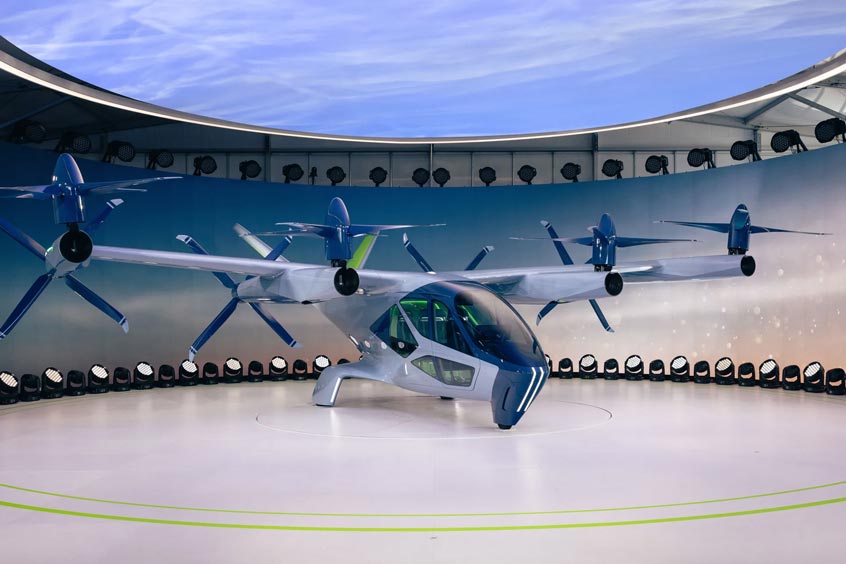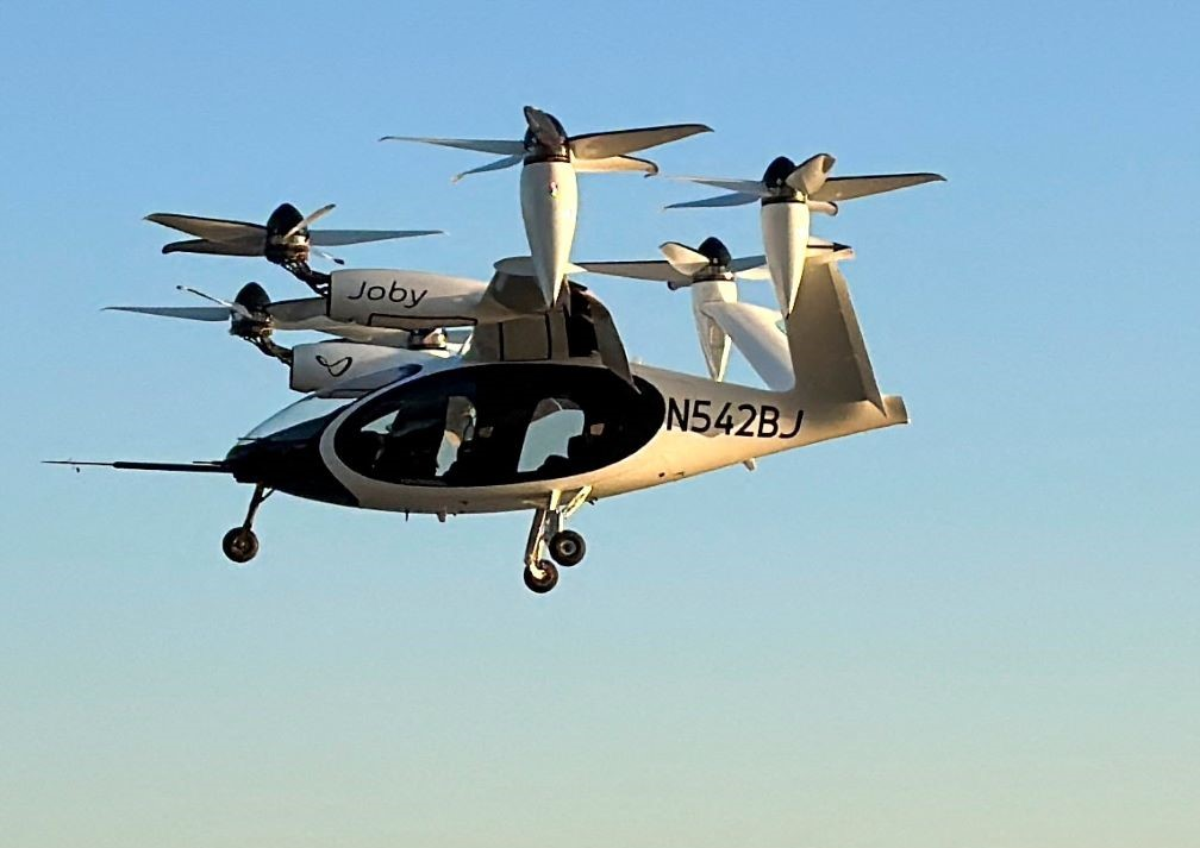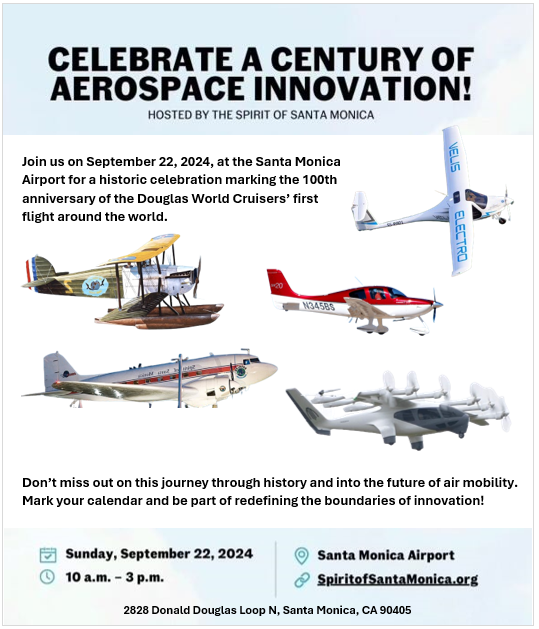
Supernal has returned to the biggest consumer electronics show to unveil its latest pilot-plus-four concept, which will fly low altitude for up to 40 mile trips. The Hyundai business has drawn on automotive design.
Hyundai Motor Group’s Advanced Air Mobility business Supernal has unveiled S-A2, its electric vertical takeoff and landing vehicle product concept at CES 2024. The pilot-plus-four-passenger vehicle marks the latest milestone in Supernal’s roadmap to commercialize safe, efficient and affordable everyday passenger air travel.
S-A2 builds on the company’s vision concept, S-A1, which it debuted at CES 2020, bringing together the innovative aerospace engineering and Hyundai Motor Group automotive aesthetic design to create a new mode of transportation to get people in urban areas from point A to point B faster. Supernal will achieve commercial aviation safety levels and enable affordable manufacturing of its vehicles as it prepares to enter the market in 2028.
“From the beginning, Supernal has been on a mission to create the right product and the right market at the right time,” says Jaiwon Shin, president of Hyundai Motor Group and CEO of Supernal. “The unveiling of S-A2 demonstrates our unwavering commitment to deliver on that mission with a safe, efficient vehicle design that provides a clear path to market entry. By leveraging our talented 600-person team, the vast technical and business capabilities of Hyundai Motor Group and trusted aviation suppliers around the world, Supernal is ready to deliver a new era of flight.”
S-A2 is a V-tail aircraft designed to cruise 120 miles-per-hour at a 1,500-foot altitude to meet typical city operation needs of 25- to 40-mile trips, initially. It features a distributed electric propulsion architecture and has eight all-tilting rotors. At entry into service, Supernal’s vehicle will operate as quietly as a dishwasher: 65 dB in vertical take-off and landing phases and 45 dB while cruising horizontally.
The vehicle is designed with a priority on safety and a focus on sustainability and passenger comfort. Engineered to achieve the global commercial aviation standard of safety, it has a robust airframe structure including redundant components in critical systems such as powertrain, flight controls and avionics. The all-tilting rotor configuration will power the vehicle through both the vertical-lift and horizontal-cruise phases of flight with unique efficiency. To maintain superior quality while also being cost-effective, the vehicle will be manufactured leveraging Hyundai’s mass production capability.
“Supernal’s product concept vehicle is the result of the creativity and hard work of our world-class team. S-A2 is designed to take full advantage of emerging electric powertrain advancements that will define the next generation of aviation,” says Ben Diachun, chief technology officer, Supernal. “From here, we will develop this concept into a revolutionary commercial product.”
As Supernal continues to optimize its vehicle for certification, mass production and expanded use cases, the Company is also focused on interior modularity and battery upgradability. This includes the ability to replace the battery module as technology advances.
Hyundai Motor Group’s Advanced Air Mobility business Supernal has unveiled S-A2, its electric vertical takeoff and landing vehicle product concept at CES 2024. The pilot-plus-four-passenger vehicle marks the latest milestone in Supernal’s roadmap to commercialize safe, efficient and affordable everyday passenger air travel.
S-A2 builds on the company’s vision concept, S-A1, which it debuted at CES 2020, bringing together the innovative aerospace engineering and Hyundai Motor Group automotive aesthetic design to create a new mode of transportation to get people in urban areas from point A to point B faster. Supernal will achieve commercial aviation safety levels and enable affordable manufacturing of its vehicles as it prepares to enter the market in 2028.
“From the beginning, Supernal has been on a mission to create the right product and the right market at the right time,” says Jaiwon Shin, president of Hyundai Motor Group and CEO of Supernal. “The unveiling of S-A2 demonstrates our unwavering commitment to deliver on that mission with a safe, efficient vehicle design that provides a clear path to market entry. By leveraging our talented 600-person team, the vast technical and business capabilities of Hyundai Motor Group and trusted aviation suppliers around the world, Supernal is ready to deliver a new era of flight.”
S-A2 is a V-tail aircraft designed to cruise 120 miles-per-hour at a 1,500-foot altitude to meet typical city operation needs of 25- to 40-mile trips, initially. It features a distributed electric propulsion architecture and has eight all-tilting rotors. At entry into service, Supernal’s vehicle will operate as quietly as a dishwasher: 65 dB in vertical take-off and landing phases and 45 dB while cruising horizontally.
The vehicle is designed with a priority on safety and a focus on sustainability and passenger comfort. Engineered to achieve the global commercial aviation standard of safety, it has a robust airframe structure including redundant components in critical systems such as powertrain, flight controls and avionics. The all-tilting rotor configuration will power the vehicle through both the vertical-lift and horizontal-cruise phases of flight with unique efficiency. To maintain superior quality while also being cost-effective, the vehicle will be manufactured leveraging Hyundai’s mass production capability.
“Supernal’s product concept vehicle is the result of the creativity and hard work of our world-class team. S-A2 is designed to take full advantage of emerging electric powertrain advancements that will define the next generation of aviation,” says Ben Diachun, chief technology officer, Supernal. “From here, we will develop this concept into a revolutionary commercial product.”
As Supernal continues to optimize its vehicle for certification, mass production and expanded use cases, the Company is also focused on interior modularity and battery upgradability. This includes the ability to replace the battery module as technology advances.












